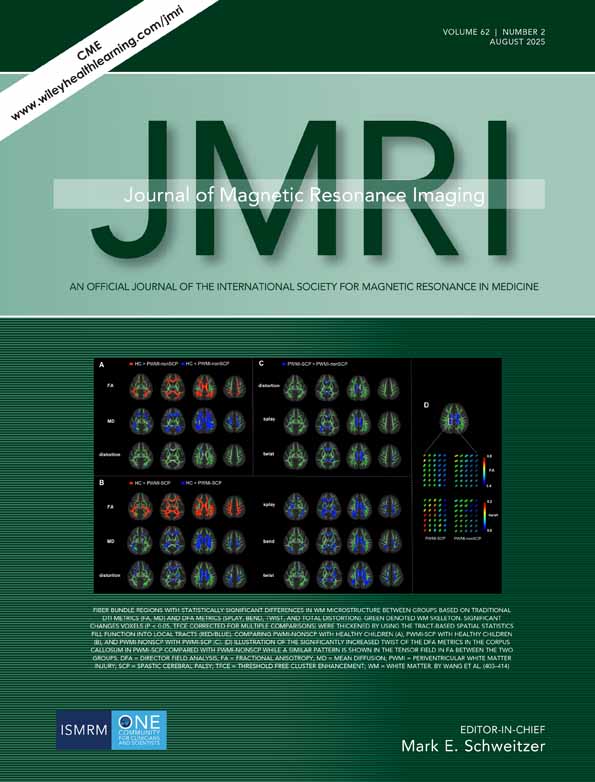FAIR-TrueFISP imaging of cerebral perfusion in areas of high magnetic susceptibility differences at 1.5 and 3 Tesla
Abstract
Purpose
To estimate cerebral blood perfusion in areas of strong magnetic susceptibility changes with high spatial and temporal resolution using a flow-sensitive alternating inversion recovery (FAIR) arterial spin labeling (ASL) method.
Materials and Methods
We implemented an ASL method that is capable of imaging perfusion in areas of high magnetic susceptibility changes by combining a FAIR spin preparation with a true fast imaging in steady precession (TrueFISP) data acquisition strategy. A TrueFISP readout sequence was applied especially in regions with magnetic field inhomogeneities and compared with corresponding FAIR measurements obtained with a standard echo-planar imaging (EPI) readout. Quantitative perfusion images were obtained at 1.5 Tesla (1.5T) from eight healthy volunteers (24–42 years old) and one patient (23 years old). FAIR-TrueFISP perfusion images were compared with FAIR echo-planar images. T1 maps, which are necessary for quantitative perfusion estimation, were obtained with inversion recovery (IR) TrueFISP and IR EPI. Additionally, high-resolution perfusion measurements were performed on four volunteers at 3T.
Results
The two ASL perfusion imaging modalities yielded comparable diagnostic image quality in brain areas with low susceptibility differences at 1.5T. Cerebral perfusion of gray matter (GM) areas was 105.7 ± 5.2 mL/100 g/minute for FAIR-TrueFISP and 88.8 ± 14.6 mL/100 g/minute for FAIR-EPI at 1.5T, and 70.4 ± 7.1 mL/100 g/minute for FAIR-TrueFISP and 63.5 ± 6.9 mL/100 g/minute for FAIR-EPI at 3.0T. Higher perfusion values at 1.5T were due to more pronounced partial-volume effects from fast moving spins at lower spatial resolution. The FAIR-TrueFISP sequence showed no significant distortions and markedly reduced signal void artifacts in areas of high susceptibility changes (e.g., near brain–bone transitions and close to metallic clips) compared to FAIR-EPI. At 3T, highly resolved FAIR-TrueFISP perfusion images were acquired with an in-plane resolution of up to 1.3 mm.
Conclusion
FAIR-TrueFISP allows for assessment of cerebral perfusion in areas of critically high susceptibility changes with conventional ASL methods. J. Magn. Reson. Imaging 2007. © 2007 Wiley-Liss, Inc.




